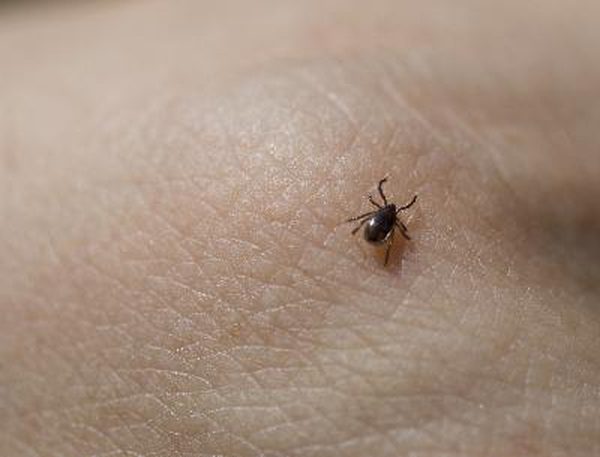|
by Ed Lawrence, KTA Trail Care Coordinator Know the Basics
Ticks have been in the background for millions of years. Today, because their habitat and prevalence are on the increase, so is the risk they pose to our health from the bacterium they can harbor. Ticks position themselves on vegetation and patiently wait for a suitable creature to brush by. Once onboard, they seek out a place to attach themselves to feed off the blood of their new host. It’s at this time that the Lyme disease or other bacterium can be spread through the bite of an infected tick. Navel Gazing The good news, according to current medical understanding, is that in most cases the tick must be attached to the host for a number of hours—somewhere between 24 and 48—before it can transmit the bacterium. This means that a window of opportunity exists for hikers and other outdoor recreationists to do a tick-check after finishing their outing. The most important thing you can do to protect yourself is to shower as soon as possible and then examine yourself very thoroughly using a mirror and/or second set of eyes to determine that you are tick-free. Humans can be infected by immature ticks, called nymphs, which are extremely small—the size of the period at the end of this sentence—so you need to be attentive when doing the check. Ticks can attach themselves anywhere but tend to prefer “squeeze” spaces, such as between toes, behind the knees, around the groin area, in the armpits, about the ears, in the hairline, and, yes, even in the belly button, so do not overlook any part of your anatomy. If you find an embedded tick, don’t panic. Using a tick-removal scoop or pair of tweezers, gently but firmly pull the tick straight out. Monitor the bite site for any adverse reaction beyond a red mark. Preventative Protection There are a number of field-tested products available that are effective at repelling ticks and other insects. Always read the product label and use only as intended. Something to consider when choosing a product is how long it lasts once applied. • DEET: Developed in the 1940s for military use, DEET may be used on both skin and clothing but shouldn’t be applied to skin under clothing. Testing done by Consumer Reports showed that a concentration of 30% DEET is effective for up to 6 hours and that a higher concentration doesn’t increase its effectiveness but only the length of time that it remains effective. One drawback is that DEET is considered a “plasticizer”—meaning it will damage rubber, plastic, leather, vinyl, rayon, spandex, elastic, and auto paint. If you use DEET, avoid letting it come into contact with glasses and other items made of or containing these materials. • Permethrin: Developed in the 1970s, this synthetic pyrethroid acts the same way as a natural extract from chrysanthemums. Although permethrin may be applied directly to skin as a treatment for head lice, it’s generally used by outdoor recreationists to treat clothing and gear. It’s sprayed on before clothing is worn and should be allowed to dry after application. • Picaridin: First used in Europe, this product is modeled on the molecule found in pepper plants. It’s sold as a lotion or spray that may be applied directly to the skin. Consumer Reports found it be very effective when used at a concentration of at least 20%. • Synthesized Plant Oils: Citronella, peppermint, geranium, lemongrass, and other plant and herbal oils can be effective as natural insect repellents. One drawback is that they have a short duration time, so they need to be reapplied more frequently. Hikers walking on maintained trails are more likely to encounter ticks at ground level, so treating clothing from the knee down should be a priority. Ticks can pose a serious health threat, but they should not keep anyone from enjoying the outdoors. A prudent strategy to protecting yourself is to be proactive in guarding against becoming a host by using an effective repellant and always doing a tick-check at the first opportunity. Get in the habit of doing a check morning and night on a daily basis, whether you’ve been outside or not, as ticks can also be picked up from pets that have been out or from clothing that was previously worn outside. Ticks are here to stay, so it’s up to us to keep them at bay.
1 Comment
Nancy Morrell
7/1/2018 07:54:43 am
Thank you so much for this well written article about ticks.
Reply
Your comment will be posted after it is approved.
Leave a Reply. |
Categories
All
Archives
July 2024
Keystone Trails AssociationSubmissions welcome! |
Sign up for our newsletter: |
|
Learn |
Contact |
|

 RSS Feed
RSS Feed
